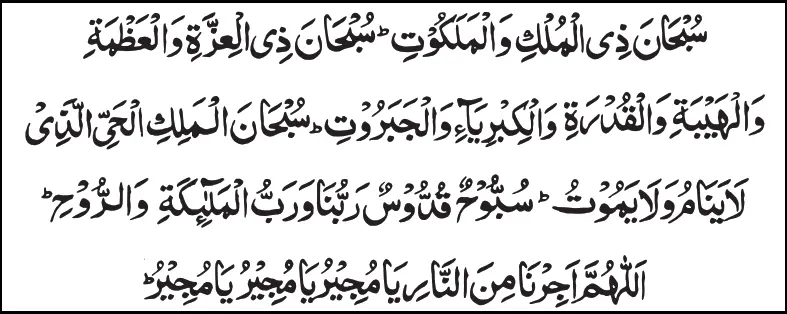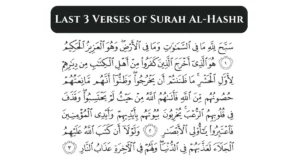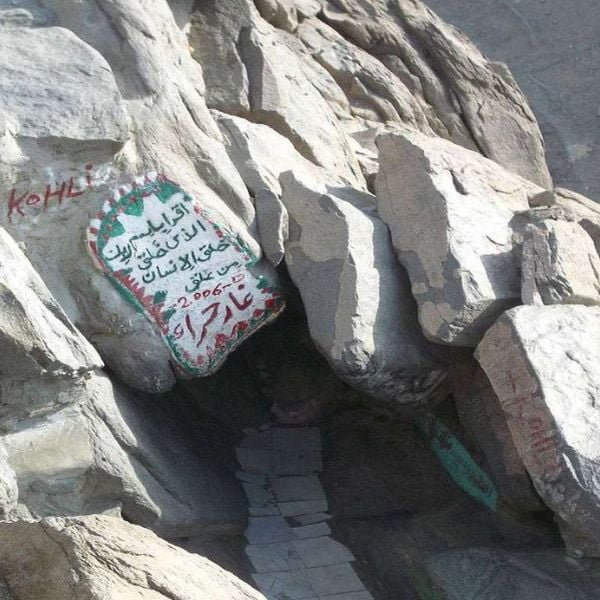Welcoming Ramadan with Tarawih
For us Muslims, Ramadan is the most awaited time of the year, filled with more blessings and opportunities for spiritual growth. It’s a month dedicated to fasting, prayer, and drawing closer to Allah Almighty. One key aspect of this sacred month includes learning how to pray Taraweeh, an act of worship that brings us closer to our faith. During this sacred month, we strive to increase our blessings through different acts of worship, one of which is the Tarawih prayer. To further understand the significance of Ramadan, we invite you to explore our blog: “What is Ramadan, and why is it Important for Muslims?“
The word, Taraweeh, comes from the Arabic word “tarawih,” which translates to “rest and relaxation“. This is because the prayer is done in a calm and relaxed way, with breaks between each set of rak’ahs. The importance of Tarawee is highlighted in a saying of Prophet Muhammad (SAW),
“He who observes optional prayer (Tarawih prayers) throughout Ramadan, out of the sincerity of Faith and in the hope of earning reward will have his past sins pardoned.
[Riyad as-Salihin 1187]
Understanding Taraweeh Namaz
Tarawih is a special night prayer performed during Ramadan right after the Isha prayer. This prayer is considered Sunnah Mu’akkadah, a confirmed practice of the Prophet Muhammad (pbuh). This highlights its significance within Islamic tradition.
History of Ramadan Tarawih
In the last year of the life of the Holy Prophet Muhammad (PBUH), he SAW prayed Tarawee with some companions. Word spread, and more people joined in each night. However, on the fourth night, the Prophet prayed at home alone, fearing it might become obligatory for everyone.
Hazrat Aisha (RA) narrated that:
One night Allah’s Messenger (SAW) offered the prayer in the Mosque and the people followed him. The next night he also offered the prayer and too many people gathered. On the third and the fourth nights more people gathered, but Allah’s Messenger (SAW) did not come out to them. In the morning he said, “I saw what you were doing and nothing but the fear that it (i.e. the prayer) might be enjoined on you, stopped me from coming to you.” And that happened in the month of Ramadan.
From Hazrat Abu Bakr’s (RA) time until the era of Hazrat Umar (RA), people prayed individually or in small groups. Later, Hazrat Umar (RA) gathered everyone behind one imam, and they prayed 8 rak`at. Eventually, it increased to 20 rakat for ease.
Priority of daily prayers
While Taraweeh is a significant prayer, but it’s essential to remember that performing the five daily obligatory prayers (fard) takes priority over Taraweeh. Our regular prayers are a fundamental part of our faith.
Praying Tarawih in congregation is a powerful experience. It reminds us of the strength and beauty of our Muslim community as we stand shoulder to shoulder in prayer, united in our faith and dedication. This prayer can also be considered a part of Qiyam ul Layl since they can be prayed until midnight. For those interested in further exploring the night prayers beyond Taraweeh, our blog post on “Ten Amazing Facts About Qiyam ul Layl” offers a comprehensive guide to this deeply spiritual practice.
For more information, visit our blog Congregational Prayer.
Regular Prayers vs. Taraweeh Prayer
If you want to learn how to pray Tarawih, it’s important to know that both Taraweeh and our regular prayers follow the same basic structure, which includes units (rak’ahs) consisting of standing, bowing, and prostrating. In each rak’ah, we recite Surah Al-Fatiha followed by another portion of the Quran. Its different nature lies in the extended recitation of the Holy Quran, allowing us to engage ourselves in its verses more deeply than in daily prayers.
We do Itikaf in Ramadan, read our blog on The Do’s and Don’ts of Itikaf in Ramadan: A Detailed Overview.
How to pray Taraweeh Namaz?
First, make sure you’ve completed your Isha prayer because Taraweeh is prayed right after it. Once you’re done with Isha, you can set your intention (Niyyah) for Tarawih. This intention doesn’t have to be said out loud. It’s a silent affirmation in your heart that you’re about to perform Tarawih to seek closeness to Allah (SWT).
The Niyyah to Pray Taraweeh Alone

The Niyyah of Congregational Tarawee Prayer (Makmum)
You want to pray in a congregation with the family. In that case, the intention of the Taraweeh Prayer at home in a congregation (as a makmum) is as follows:

You can also read our blog post titled The Importance of Making Intention in Islam. Niyyah is a silent prayer preceding actions in Islam. Clear intentions guide worship, shaping behavior, and ensuring sincerity.
Number of Rakats and Sets in Tarawih
Taraweeh is usually prayed in sets of 2 rakahs, and you can pray as many sets as you feel comfortable with, though many people aim for 8 or 20 rakahs in total.
In many communities, there is a tradition to aim for the complete recitation of the Quran during Taraweeh throughout Ramadan. While it is not obligatory, it has been practised by Muslims throughout the centuries.
Read our other blog The Three Ashras of Ramadan: Mercy, Forgiveness, and Salvation.
After every two or four rak’ahs, it’s common to take a short break. You can use this time for personal reflection, to make dua (supplication), or just to catch your breath. These breaks are part of what makes Tarawee a bit more relaxed compared to your daily prayers.
Witr Prayer
After finishing the Taraweeh prayers, We are required to end our night prayers with the Witr prayer. This prayer has 3 units and is often prayed together in congregation. In the Witr prayer, there’s a special part called Qunoot where we ask Allah (swt) for help, forgiveness, and protection. The Witr prayer wraps up the night’s prayers, giving us a quiet time to feel close to Allah (swt) and end the night feeling peaceful and spiritually fulfilled.
At the end of this month, we celebrate the very beautiful Islamic Festival Eid-ul-Fitr, To learn more about the significance of Eid al-Fitr and its celebrations.
Tarawih salah Dua
During these breaks between sets of rakats, there is no specific Sunnah or recommended dua for Tarawih. However, you can read the following dua or engage in any form of remembrance (dhikr) of Allah, recite tasbih (glorification), send blessings upon the Prophet Muhammad SAW (durood), or simply remain silent. The focus during these breaks is on personal reflection and connection with Allah (swt).

Taraweeh Prayers: At Home vs. Mosque
When it comes to Tarawee prayers during Ramadan, we have the flexibility to pray either at the mosque or in the comfort of our homes. Each option has its unique benefits, and the choice often depends on individual circumstances.
Here are some considerations for Tarawee prayers at home and in the mosque:
Praying Taraweeh at the Mosque
Joining Tarawih prayers at the mosque brings us together with our community, strengthening our sense of unity and shared faith. The mosque offers a peaceful and spiritually enriching setting that can raise our Tarawih experience.
You can visit our blog post to read more about the importance of mosques in Islam.
Many of us look forward to praying in the mosque, especially during the last ten nights of Ramadan, hoping to witness Laylat al-Qadr, the Night of Power.
With an Imam leading the prayer, we benefit from their expertise and beautiful recitation, which can increase our connection to the Quran. Additionally, praying at the mosque can help us stay consistent with our prayers and follow the recommended number of rakats more easily.
Praying Tarawee at Home
On the other hand, praying Tarawih at home offers its own advantages. It gives us the chance to involve our families in the worship, creating a special bonding experience. For those of us with young children, work commitments, or other responsibilities, praying at home can be more convenient and flexible.
Read our about The Do’s and Don’ts During Ramadan for Muslims.
At home, we can set our own pace, perhaps reflecting longer on certain verses or making more personalized supplications. The quiet and privacy of home can also help some of us focus better on our prayers, making our connection with Allah (SWT) more intimate.
Deciding whether to pray Taraweeh at home or the mosque depends on what works best for you. Some people like being part of a community at the mosque, while others prefer the comfort of home. Whether we find that in the communal spirit of the mosque or the personal space of our home, what matters most is that we engage in this beautiful practice with sincerity and devotion.
FAQs
Is Taraweeh Mandatory, Sunnah, or Nafl?
Taraweeh prayer is considered a Sunnah Mu’akkadah, which means it is an stresses and recommended practice established by the Prophet Muhammad (pbuh). While not obligatory (Fard), neglecting it without a valid reason is discouraged in Islamic tradition. Performing Tarawih namaz is highly recommended during the month of Ramadan, and many Muslims consider it an important part of their worship during this blessed month.
Can you pray Taraweeh alone?
Yes, you can pray Tarawee alone. It might be a good idea to go to the mosque if you find it hard to read or worry about getting too tired or losing motivation at home. But it’s completely fine to pray alone, and you’ll still get rewarded for it.
Can women perform Tarawih at home?
Yes, women can perform Tarawih at home and gain the same spiritual benefits as praying in a mosque. Praying at home offers flexibility and comfort, especially for those with family responsibilities or personal preferences for private worship.
How long does tarawee take?
The length of Taraweeh can vary widely, often influenced by the pace of recitation and the number of rakats performed. In mosques, it might last over an hour, especially when aiming to complete a juz’ (para) of the Quran each night. At home, the duration can be adjusted to your personal preference and schedule.
Is it necessary to complete the Quran in Tarawih?
Completing the Quran during Taraweeh is an admirable practice but not mandatory. The primary goal is to engage in extended prayer and reflection, whether that includes completing the Quran or focusing on specific surahs.
How many Rakats in Tarawih?
Traditionally, the number of rakats for Tarawee ranges from 8 to 20, based on different historical practices and scholarly opinions. The exact number isn’t specified in foundational Islamic texts, so there’s flexibility in how many rakats you can perform.
Can Taraweeh be performed after Witr?
It’s best to perform Taraweeh before the Witr prayer, as Witr is typically the last prayer of the night. However, if someone has missed Tarawih and wishes to make it up after Witr, it’s permissible but not the preferred order.
What if I miss some nights of Tarawih?
Missing Taraweeh does not sin, as it’s a voluntary prayer. If you miss some nights, you can continue praying Tarawih on subsequent nights without needing to make up for missed prayers. The key is consistency in worship and making the most of the nights you can pray.










“Thank you for being a motivational architect, designing a blueprint of success and inspiration in every post.”
Ramadan is a beautiful time for spiritual renewal, and Tarawih makes the nights even more special. How do you make the most of this prayer during the holy month?